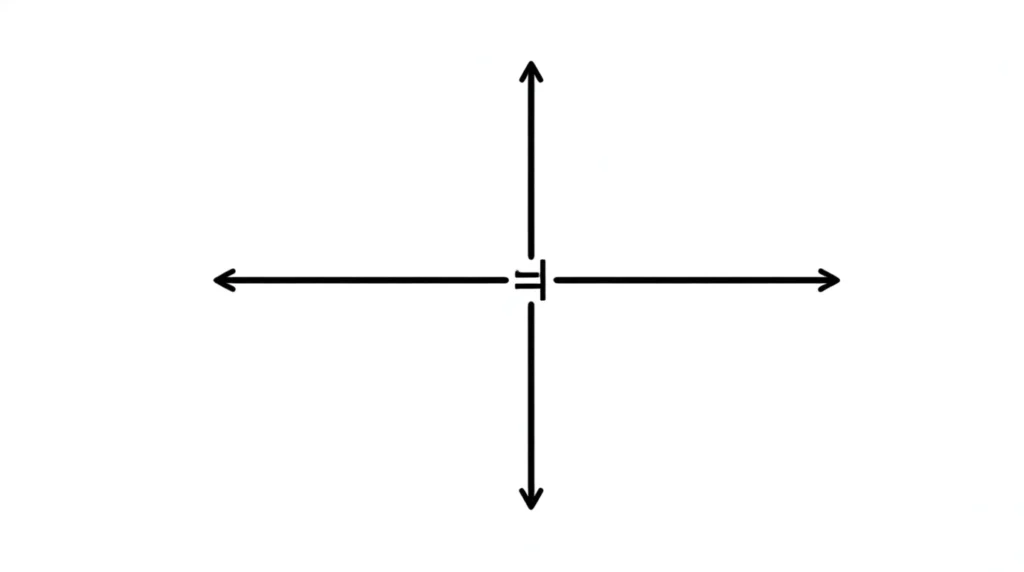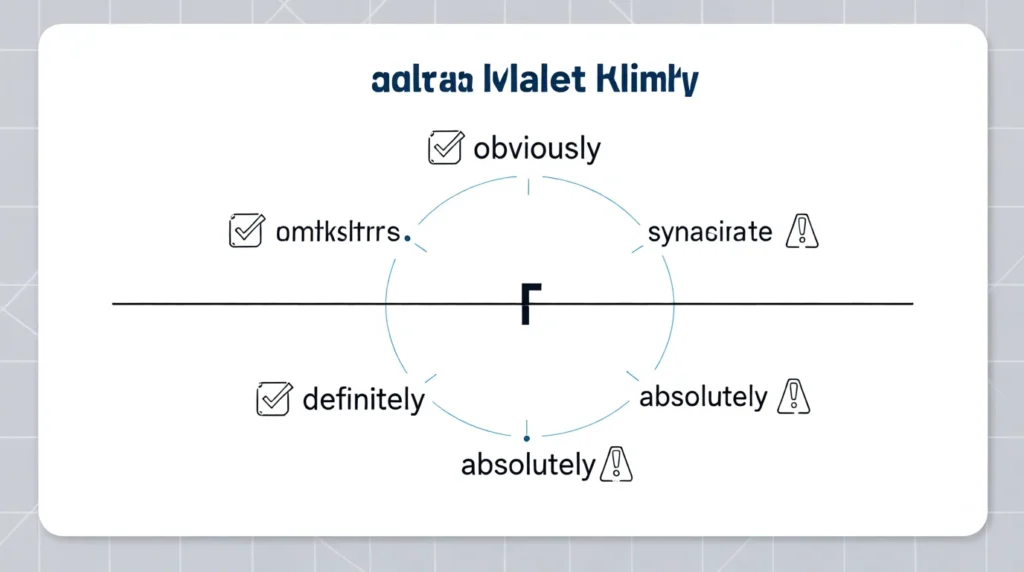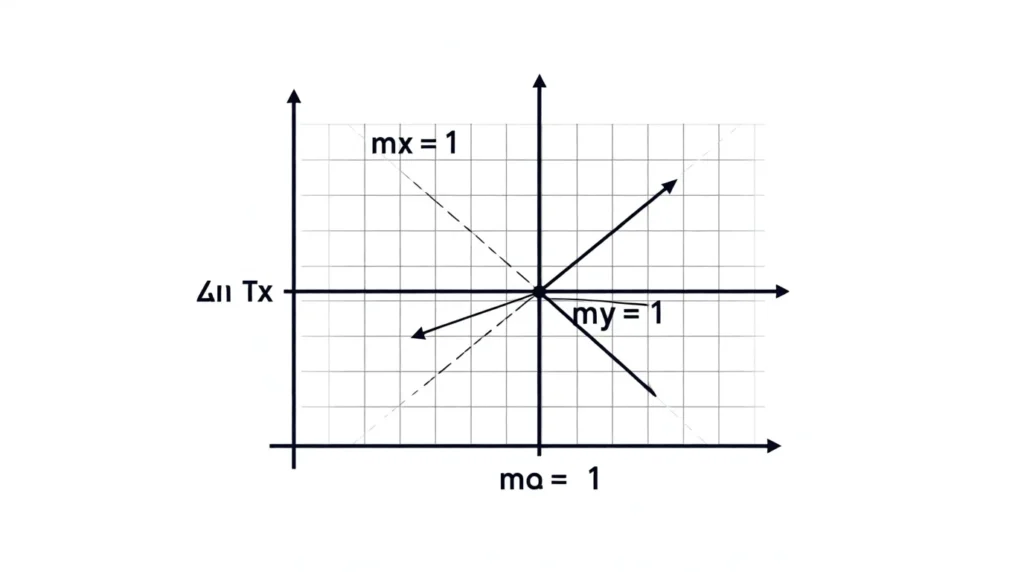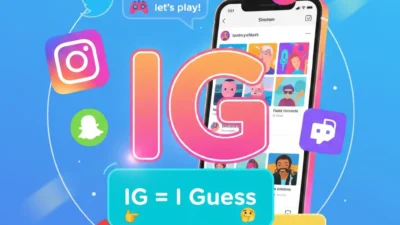Perpendicular means two lines or surfaces that meet at a right angle (90°). It describes a perfect vertical or horizontal relationship between two geometric elements. In math and geometry, perpendicular lines create an exact L-shape where they intersect.
Understanding perpendicularity is essential in geometry, architecture, engineering, design, physics, navigation, and even everyday situations like reading maps or aligning objects. In this complete guide, we’ll explore what perpendicular means, how it’s used, real-life examples, diagrams, differences from parallel lines, and why the concept matters so much.
What Does Perpendicular Mean in Geometry?
In geometry, perpendicular describes two lines, line segments, rays, or surfaces that meet at a 90-degree angle, also known as a right angle. When two geometric elements are perpendicular:
- They form a perfect square corner
- The angle between them is 90°
- They intersect cleanly without slanting
- They create an L-shape
Perpendicular Symbol
The symbol for perpendicular is:
⊥
For example:
AB ⊥ CD
means line AB is perpendicular to line CD.
Key Properties of Perpendicular Lines
- They always form right angles
- They intersect at exactly one point
- They divide planes into equal sections
- They are used to measure height and depth
- They form the basis of coordinate geometry
The entire grid system of mathematics, including graphs and coordinates, is built on perpendicularity.

Perpendicular Lines Explained
Perpendicular lines are two straight lines that cross each other at a right angle. This is the most common use of the term.
How to Identify Perpendicular Lines
You can tell two lines are perpendicular if:
- They create an L-shape
- They form four right angles when they intersect
- The slopes multiply to –1 (in algebraic geometry)
Examples in Geometry
- The x-axis and y-axis on a graph
- The sides of a square
- The height line dropped from a triangle’s vertex
Perpendicularity is one of the most fundamental relationships in geometric reasoning.

Perpendicular Line Segments
Line segments behave the same way as lines. Two line segments are perpendicular if they meet at a right angle, even if they are not infinite.
Real-World Examples
- The corner edges of a book
- Table legs meeting the tabletop
- Tiles arranged in a grid pattern
Perpendicular segments help create symmetry and accuracy in structures.
Perpendicular Rays
Two rays can also be perpendicular if their paths extend from a common point and create a right angle.
Example
Think of a clock:
- The hour hand at 12
- The minute hand at 3
These two hands form a 90-degree angle — making them perpendicular.

Perpendicular in Coordinate Geometry
Coordinate geometry uses perpendicular concepts extensively.
Slopes of Perpendicular Lines
If line 1 has a slope m₁ and line 2 has a slope m₂, the lines are perpendicular if:
m₁ × m₂ = –1
This means their slopes are negative reciprocals.
Example
Line A has a slope of 2
Line B has a slope of –½
Since: 2 × –½ = –1
The lines are perpendicular.
This algebraic rule is extremely useful in graphing and solving geometry problems.

Perpendicular Bisector
A perpendicular bisector is a line that:
- Cuts another line segment into two equal parts
- Intersects it at a right angle
Importance in Geometry
Perpendicular bisectors are used in:
- Triangle constructions
- Finding circumcenters
- Map triangulation
- Navigation and GPS technologies
You’ll encounter perpendicular bisectors in many geometric proofs.
Perpendicular Planes
In 3D geometry, not only lines but planes (flat surfaces) can also be perpendicular.
Example of Perpendicular Planes
- A wall meeting a floor
- A table surface meeting a vertical board
- The sides of a rectangular prism
These planes meet at a 90-degree angle, creating a three-dimensional perpendicular relationship.
Perpendicular Vectors
In physics and mathematics, vectors are perpendicular when their dot product equals zero.
Example
Vector A • Vector B = 0
This means the vectors are orthogonal — another word for perpendicular.
This concept is essential in physics, machine learning, 3D modeling, and engineering calculations.
Perpendicular vs. Parallel Lines
Many people confuse perpendicular lines with parallel lines, but they are very different.
Perpendicular
- Meet at 90 degrees
- Form right angles
- Cross at one point
Parallel
- Never meet
- Always remain the same distance apart
- Have equal slopes
Understanding the difference helps avoid common geometry mistakes.
Real-Life Examples of Perpendicular
Perpendicularity appears everywhere around you — once you know what to look for.
Architecture and Construction
- Walls meeting floors
- Door frames
- Window edges
- Building corners
Right angles ensure stability, symmetry, and usability.
Engineering and Surveying
- Measuring land
- Creating accurate road plans
- Aligning bridges
- Designing machinery parts
Perpendicularity ensures precision.
Everyday Life
- A pencil standing straight on paper
- A flagpole standing on the ground
- The corners of mobile screens
- A staircase’s riser meeting the tread
The concept appears in almost every physical object you use.
Maps and Navigation
Grid maps use perpendicular north-south and east-west lines to guide directions.
Technology and Design
- Graphic design grids
- 3D modeling software
- UI/UX layout tools
- Typography alignment
Designers rely on perpendicular guides to create clean layouts.
Why Perpendicularity Matters
Understanding perpendicular relationships helps in:
Problem Solving
Geometry questions, equations, and diagrams become easier.
Critical Thinking
Identifying structure and patterns enhances logical reasoning.
Technical Skills
Essential for engineering, drafting, math, construction, and CAD design.
Everyday Accuracy
Helps with DIY projects, measuring furniture, hanging photo frames, etc.
Academic Success
Students score higher in math when they master perpendicularity.
The concept is simple but has enormous practical value.
Perpendicular in Trigonometry
Right triangles — the foundation of trigonometry — involve perpendicular sides.
The Legs of a Right Triangle
- One leg is perpendicular to the other
- The angle between them is 90 degrees
This relationship allows:
- Sine
- Cosine
- Tangent
- Pythagorean theorem
All to function properly.
Perpendicular in Physics
In physics, perpendicular directions play a major role.
Examples
- Magnetic fields are perpendicular to electric currents
- Forces acting at right angles create torque
- Projectile motion separates into perpendicular components
Physics heavily depends on perpendicular relationships to describe motion and energy.
Perpendicular in Everyday Language
Outside of math, perpendicular can also describe something that is upright, vertical, or straight.
Example:
“Stand perpendicular to the ground”
Means: stand straight up.
This usage appears in fitness, sports, and instructions.
Common Misconceptions About Perpendicular
“Perpendicular always means vertical.”
Incorrect.
It means 90 degrees, not necessarily “upwards.”
“Only lines can be perpendicular.”
Planes, segments, rays, and vectors can also be perpendicular.
“If two lines meet, they are perpendicular.”
They must meet at exactly 90°, not any angle.
“Perpendicular is the same as parallel.”
Totally different concepts.
Understanding these clarifies geometry dramatically.
How to Use Perpendicular in a Sentence
Here are accurate examples:
Mathematical Use
- “Line AB is perpendicular to line CD.”
- “The slopes of the lines show they are perpendicular.”
Everyday Use
- “Hold the ladder perpendicular to the ground.”
- “The wall is perpendicular to the floor.”
Academic Use
- “The perpendicular bisector divides the segment evenly.”
- “Two vectors are perpendicular when their dot product is zero.”
Using the term correctly improves clarity and precision.
FAQs About Perpendicular
What is the simple meaning of perpendicular?
It means two lines or surfaces that meet at a 90-degree angle.
Are perpendicular and right angle the same?
A right angle is the angle formed; perpendicular describes the relationship that creates it.
Can curved lines be perpendicular?
No. Only straight lines, rays, segments, or planes can form perpendicular angles.
What is the perpendicular symbol?
The symbol is ⊥, meaning “is perpendicular to.”
What is perpendicular vs. parallel?
Perpendicular lines meet at right angles; parallel lines never meet.
Final Thoughts
Perpendicular means two lines, surfaces, rays, vectors, or planes that meet at a 90-degree angle. It is one of the most important concepts in geometry, mathematics, and real-life design. From buildings to maps to technology, perpendicularity ensures accuracy, symmetry, and structural reliability.
Understanding perpendicular relationships improves problem-solving skills, enhances mathematical reasoning, and helps you interpret the physical world more clearly. Whether you’re a student, teacher, designer, or simply someone curious about geometric language, mastering the meaning of perpendicular opens the door to clearer communication and stronger logical thinking.





